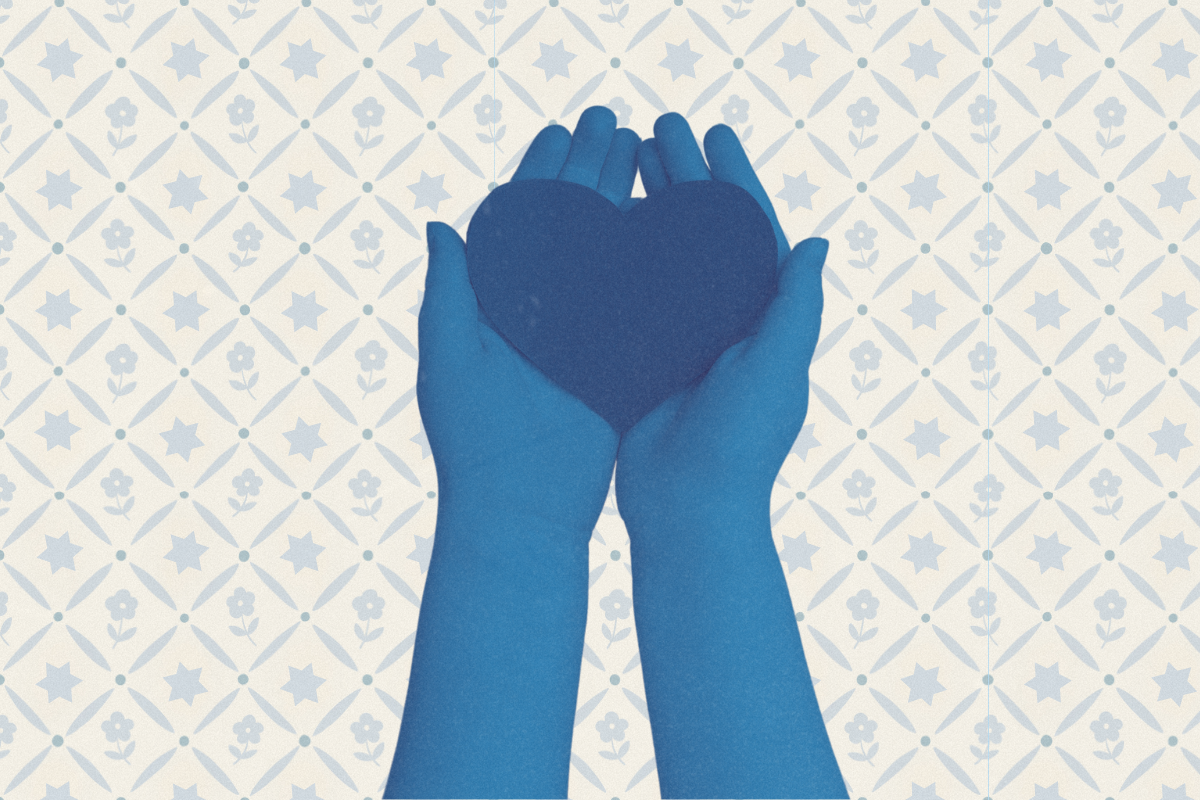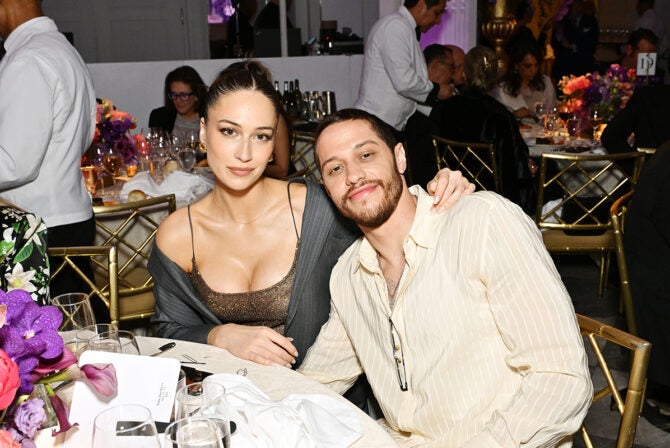My grandmother, Edith, made brisket. The kind of meaty, oniony, rich brisket that forged ceasefires between family members. The kind of mouth-watering, fall-apart-on-your-fork, mop-up-the-juices-with-bread brisket for which family members, who were decently distant the remainder of the year, flocked to our big Brooklyn house during the High Holidays. The kind of traditional Jewish brisket that her mother made and her mother before made and her mother before made somewhere back in Eastern Europe.
We’d freeze her brisket, whatever was left over, and eat from it all year round. When my mother sold the house, years after my grandmother had passed, we emptied the fridge by eating from it in preparation.
One day, on the other end of the phone, my mother choked back soft tears, spitting out between hiccups that she was making the last of Nanny’s brisket. With that container would go the last of her handmade, culinary love.
Nanny’s brisket kept our small family together until she passed away. After that, my mother took over the tradition. By that time, the close-knit unit we had once been was now fraying at the seams—there were no more Sunday night dinners with my uncle playing piano in the background. By the time I was 24, I had moved out west. My mother started eating brisket with close friends in Manhattan, while I traded in my traditional meals for life in Las Vegas. I began a nomadic path that traversed cross-country and back, while searching for professional and personal fulfillment. I moved often, sometimes yearly, to new residences, never spending more than two to three years in one house.
One holiday, I ventured into territory unknown and threw my first dinner party. I evoked Ina Garten and made a roast that we (literally) licked off the pan. And with it, I discovered I could create my own home by feeding those I loved within my own four walls. While friends peeled off and married, settling down into life and making babies, I kept trying new things. New jobs, new projects, new paths I had yearned to travel. Throughout the changes, only one thing remained consistent: my need to cook for friends in my personal space.
After a challenging year, I found myself in Los Angeles and ready for the next chapter of my life. The walls were hung with paintings, my clothes were unpacked, and photos decorated the fridge. And so I determined my next gathering would evoke the (grand)mother of all memorials—I would make my grandmother’s brisket. Days before the shindig, I called my mother for help.
“Go to the butcher and ask him for ‘first cut’ brisket,” my mother had ordered with pointed commitment. And so I went. And when I made my request, the confident butcher pointed me towards a slab of beef so big it truncated my Shih Tzu, Winston, in size and weight. I was quizzical. I didn’t remember my grandmother’s raw ingredient looking like this, but he assured me I was set.
Back home, I chopped 20 onions without shedding a single tear. I trimmed what fat I could off the meat. And in the back of my head, the entire time, was the memory of my slight-framed grandmother with her glasses-on-a-string perched on her nose.
Hours into the cooking, the doubts started to creep in. The water filled with liquid fat-globules. They weren’t rising to the top, as fat had so gracefully done for my grandmother. My neighbor, one floor above, texted me, “Omg are u making your roast it smells soo good, the torture!”
When it finally came time to remove my prize, the hunk of fatty meat slipped through the grasp of every utensil I reached for. With a deep breath, I reached into the pot, elbow-deep in liquid lard…pulling out a grotesque, fat-infused slab of beef that fell apart, mushy in my hands.
I put the beef aside. I wiped my hands clean,…and then I cried. I couldn’t make the brisket. Large tears fell from my eyes. I took pictures and texted them to my mom. I sent video. We walked through every step to determine the culprit. One day out from my Party of the Year, I was feeling like a failure.
We realized that the problem had not been in my preparation, but with the starting product to begin with. “First cut brisket,” the prize I had been set to fetch, is more commonly known among non-kosher butchers as “Flat Cut,” a lean-trimmed and beautiful preppy-looking cut of meat that has been cleaned of all extra fat. The lack of fat makes a liquid-based preparation a necessity in order to maintain a moist texture. The cut I had bought was free of trim and the kind best reserved for barbeque, smoking, or a method of preparation where the fat burns off as it drips down and moistens the meat. In essence, I had smothered my meat with a simmering vat of fat-water.
I bolstered myself for a second attempt. Back to the store I would go, to start from scratch. But I simply couldn’t muster the heart to give it another try.
“Sarah T.,” my mother said over the phone with her melodic voice warming my heart from across the country, “Did I ever tell you why I made a cookbook?” She was referring to a well-worn, spiral bound book that held in it every recipe that had graced my childhood. “When your father and I first got married, I burnt rice. All the time,” she confessed. The cookbook, she explained, was her way of trying to teach herself to make rice. “Rice,” she said with simple, dramatic emphasis. “Rice is a lot easier than that brisket. Everyone can make rice, and I failed. Everyone fails sometimes.”
“Don’t stop now, sweetie,” she nudged. “It’s just brisket. Buy some. Nobody will know the difference.”
I stopped in my tracks. I’d never considered buying a brisket. That would be failing, that would be compromising any Judaic Matriarch-in-Training Card that I was diligently working for. That would deceive my guests.
But they would eat.
With the party upon me, a crowd filled my small apartment. After plying guests with homemade potato latkes, I sequestered myself in the kitchen to do my dirty work. In a large Pyrex dish, I placed the saved hunk of homemade brisket I’d managed to rescue from the pot, shredding it between forks into beefy strands. Then I added in my store-bought bounty, sliced neatly and thin. I poured a waterfall of homemade gravy over the entire thing and set it in the oven to heat. Out I pulled a steaming, fragrant dish. Setting it on the table, I stepped back while a horde of friends descended like a wake of vultures, clutching paper plates and plastic forks. A warm victory.
The next morning I spoke with my dad, an amiable soul who, although divorced from my mother when I was a child, still remembered our family unit and, in particular, my spunky grandmother, with great fondness: “But Sarah, Edith would be proud.” He went on, “You did it. You didn’t stop; you didn’t throw in the towel. You figured it out and made it all work and that was something she would have done.”
It was then that I realized the grand lesson—the pinnacles of Jewish Matriarchy I endeavored to embody were not to be found cooked into the perfect slices of a well-seasoned brisket. Rather, they blossomed to life the moment I made the decision to move forward, to toss perfection aside. And that was something my grandmother would be proud of.
Read More:
Meet Hila Ratzabi: Poet, New Jewish Mom & Champion Schlepper
Meet the Orthodox Jewish Fashionista Who’s Giving Modesty a New Name
From ‘Millionaire Matchmaker’ to a Giant Challah Bake for Kids, Bryce Gruber’s Done It All









